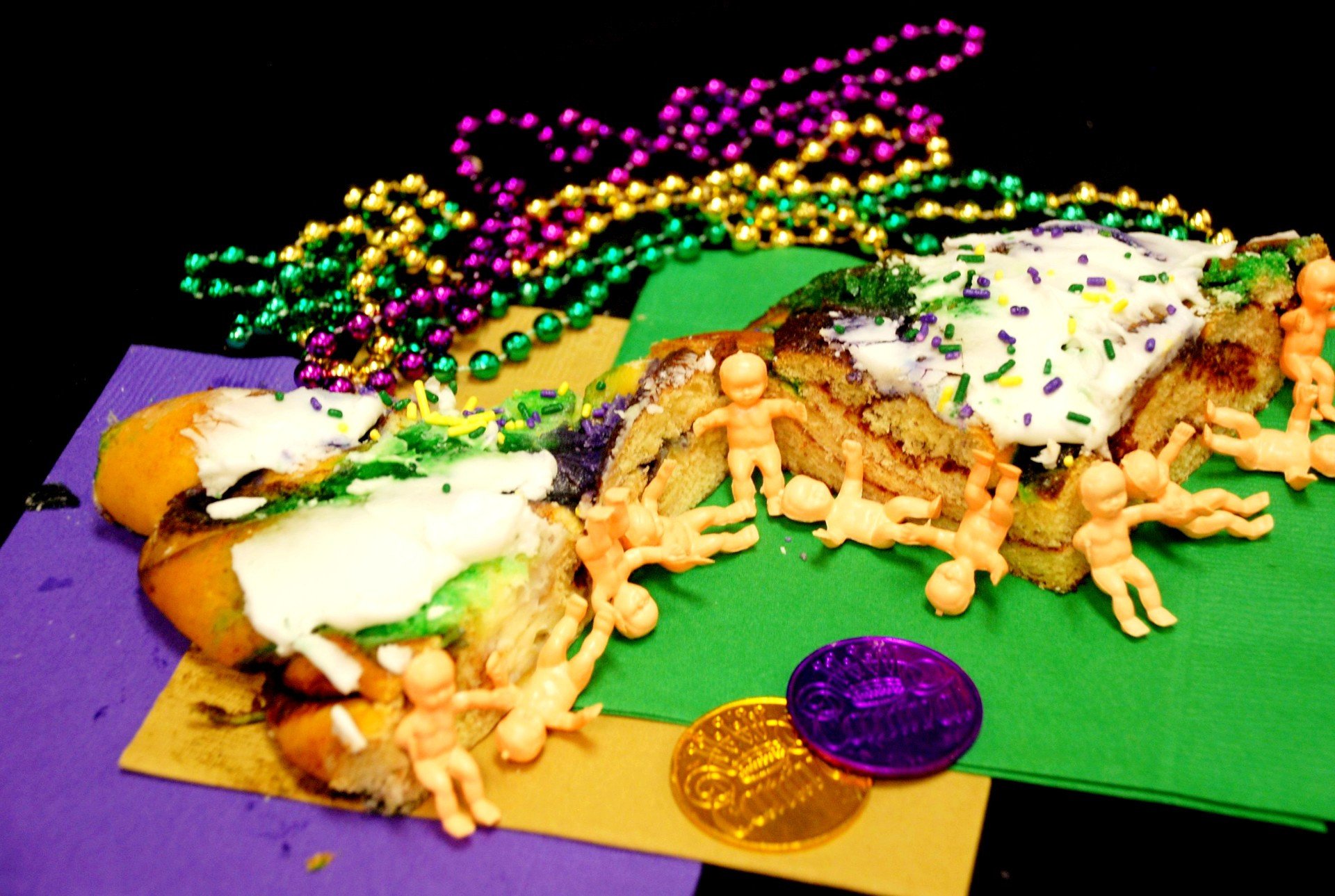STORE HOURS MON-FRI 8 AM - 3 PM
SATURDAY 8 AM - 12 NOON
(while supplies last)
CLOSED SUNDAYS
THE 2026 KING CAKE SEASON CALENDAR WILL BE AVAILABLE DECEMBER 27
WHY IS THERE A BABY IN THE KING CAKE?
Manny Randazzo's delicious king cakes are famous throughout South Louisiana and beyond. Everyone in the New Orleans area gets in line during the Mardi Gras season to get their favorite king cakes from our family-owned bakery. Nothing beats our traditional creamy icing on top of our classic cinnamon dough braids. We also value the classic king cake traditions and seek to pass them on for you and yours to enjoy and make your own. Along with your tasty king cake, Randazzo's includes a small baby which can be put into any piece. Keeping in line with the king cake's rich history, whoever finds the small baby in their slice gets to be “king” (and is expected to buy the next king cake)! But why does something so delicious happen to have something so seemingly random placed inside? The history might surprise you!
Despite its current Christian associations, the dish that would eventually become the modern king cake was commonly consumed by pagan Romans in Europe. Before the advent and spread of Christianity, ancient Romans ate a slightly less sweet cake during holidays. They placed a fava bean inside these cakes for the Saturnalia festival, a celebration of the god of the harvest. The bean could represent different things: luck, fertility, and simple fun of the draw.
The rise of Christianity in Rome brought along many new traditions, especially when it came to the proto-version of king cake. Like most things pagan, the Catholic Church sought to paper over any polytheistic themes or otherwise absorb elements of previous practices into its own faith system. Eventually, the fava bean would come to represent the baby Jesus, a practice that was common in Europe for centuries as king cake spread to the New World with Catholic colonizers.
Once Christianity spread across Rome and Europe, Saturnalia became what we now call Mardi Gras. It is also known as the Day of the Epiphany. The story has it that on this night, the three wise men traveled to Bethlehem to offer gifts of gold, frankincense, and myrrh to the newborn Jesus. In many ways, their discovery of the baby Jesus hidden away in a manger is similar to the discovery of the prize within a king cake. We include a baby inside the king cakes to help celebrate the birth of Christ, which has become commonplace in the world of king cakes, though there doesn’t always need to be an explicit religious flavor (just tasty cake).
In the present, we use a small baby figurine to symbolize the infant Jesus. The switch from beans to babies happened because of a local coincidence. A salesman with too many plastic babies on hand supposedly popularized the switch in order to make better use of his inventory. Since then, babies of all kinds, even edible ones, have been making their way into king cakes throughout Louisiana for Mardi Gras.
Remember, finding the baby inside the king cake not only makes you a “king,” but it also comes with some responsibilities. If you are so fortunate to find the baby in your slice of cake, you will be responsible for hosting the next Mardi Gras celebration and providing the next king cake!
The tradition of the baby in the king cake lives on at Manny Randazzo's bakery. Whether you are celebrating the Epiphany or are just in it for the cake, you can’t pass on the traditions of the carnival season. Don't miss out on a king cake this year; visit Manny Randazzo's bakery in the New Orleans area for the best king cake in Louisiana!
